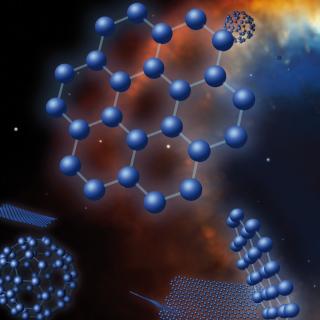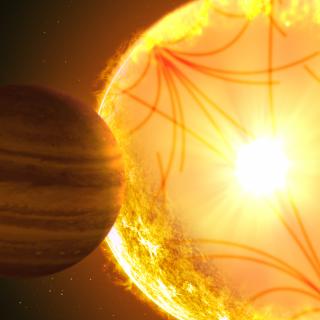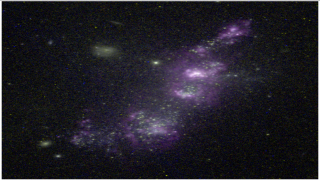Bibcode
Fortier, A.; Simon, A. E.; Broeg, C.; Olofsson, G.; Deline, A.; Wilson, T. G.; Maxted, P. F. L.; Brandeker, A.; Collier Cameron, A.; Beck, M.; Bekkelien, A.; Billot, N.; Bonfanti, A.; Bruno, G.; Cabrera, J.; Delrez, L.; Demory, B. -O.; Futyan, D.; Florén, H. -G.; Günther, M. N.; Heitzmann, A.; Hoyer, S.; Isaak, K. G.; Sousa, S. G.; Stalport, M.; Turin, A.; Verhoeve, P.; Akinsanmi, B.; Alibert, Y.; Alonso, R.; Bánhidi, D.; Bárczy, T.; Barrado, D.; Barros, S. C. C.; Baumjohann, W.; Baycroft, T.; Beck, T.; Benz, W.; Bíró, B. I.; Bódi, A.; Bonfils, X.; Borsato, L.; Charnoz, S.; Cseh, B.; Csizmadia, Sz.; Csányi, I.; Cubillos, P. E.; Davies, M. B.; Davis, Y. T.; Deleuil, M.; Demangeon, O. D. S.; Derekas, A.; Dransfield, G.; Ducrot, E.; Ehrenreich, D.; Erikson, A.; Fariña, C.; Fossati, L.; Fridlund, M.; Gandolfi, D.; Garai, Z.; Garcia, L.; Gillon, M.; Gómez Maqueo Chew, Y.; Gómez-Muñoz, M. A.; Granata, V.; Güdel, M.; Guterman, P.; Hegedüs, T.; Helling, Ch.; Jehin, E.; Kalup, Cs.; Kilkenny, D.; Kiss, L. L.; Kriskovics, L.; Lam, K. W. F.; Laskar, J.; Lecavelier des Etangs, A.; Lendl, M.; Lopez Pina, A.; Luntzer, A.; Magrin, D.; Miller, N. J.; Modrego Contreras, D.; Mordasini, C.; Munari, M.; Murray, C. A.; Nascimbeni, V.; Ottacher, H.; Ottensamer, R.; Pagano, I.; Pál, A.; Pallé, E.; Pasetti, A.; Pedersen, P. P.; Peter, G.; Petrucci, R.; Piotto, G.; Pizarro-Rubio, A.; Pollacco, D. et al.
Bibliographical reference
Astronomy and Astrophysics
Advertised on:
7
2024
Journal
Citations
16
Refereed citations
14
Description
Context. Since the discovery of the first exoplanet almost three decades ago, the number of known exoplanets has increased dramatically. By beginning of the 2000s it was clear that dedicated facilities to advance our studies in this field were needed. The CHaracterising ExOPlanet Satellite (CHEOPS) is a space telescope specifically designed to monitor transiting exoplanets orbiting bright stars. In September 2023, CHEOPS completed its nominal mission duration of 3.5 yr and remains in excellent operational conditions. As a testament to this, the mission has been extended until the end of 2026.
Aims: Scientific and instrumental data have been collected throughout in-orbit commissioning and nominal operations, enabling a comprehensive analysis of the mission's performance. In this article, we present the results of this analysis with a twofold goal. First, we aim to inform the scientific community about the present status of the mission and what can be expected as the instrument ages. Secondly, we intend for this publication to serve as a legacy document for future missions, providing insights and lessons learned from the successful operation of CHEOPS.
Methods: To evaluate the instrument performance in flight, we developed a comprehensive monitoring and characterisation (M&C) programme. It consists of dedicated observations that allow us to characterise the instrument's response and continuously monitor its behaviour. In addition to the standard collection of nominal science and housekeeping data, these observations provide valuable input for detecting, modelling, and correcting instrument systematics, discovering and addressing anomalies, and comparing the instrument's actual performance with expectations.
Results: The precision of the CHEOPS measurements has enabled the mission objectives to be met and exceeded. The satellite's performance remains stable and reliable, ensuring accurate data collection throughout its operational life. Careful modelling of the instrumental systematics allows the data quality to be significantly improved during the light curve analysis phase, resulting in more precise scientific measurements.
Conclusions: CHEOPS is compliant with the driving scientific requirements of the mission. Although visible, the ageing of the instrument has not affected the mission's performance. The satellite's capabilities remain robust, and we are confident that we will continue to acquire high-quality data during the mission extension.
Aims: Scientific and instrumental data have been collected throughout in-orbit commissioning and nominal operations, enabling a comprehensive analysis of the mission's performance. In this article, we present the results of this analysis with a twofold goal. First, we aim to inform the scientific community about the present status of the mission and what can be expected as the instrument ages. Secondly, we intend for this publication to serve as a legacy document for future missions, providing insights and lessons learned from the successful operation of CHEOPS.
Methods: To evaluate the instrument performance in flight, we developed a comprehensive monitoring and characterisation (M&C) programme. It consists of dedicated observations that allow us to characterise the instrument's response and continuously monitor its behaviour. In addition to the standard collection of nominal science and housekeeping data, these observations provide valuable input for detecting, modelling, and correcting instrument systematics, discovering and addressing anomalies, and comparing the instrument's actual performance with expectations.
Results: The precision of the CHEOPS measurements has enabled the mission objectives to be met and exceeded. The satellite's performance remains stable and reliable, ensuring accurate data collection throughout its operational life. Careful modelling of the instrumental systematics allows the data quality to be significantly improved during the light curve analysis phase, resulting in more precise scientific measurements.
Conclusions: CHEOPS is compliant with the driving scientific requirements of the mission. Although visible, the ageing of the instrument has not affected the mission's performance. The satellite's capabilities remain robust, and we are confident that we will continue to acquire high-quality data during the mission extension.
Related projects

Nucleosynthesis and molecular processes in the late stages of Stellar Evolution
Low- to intermediate-mass (M < 8 solar masses, Ms) stars represent the majority of stars in the Cosmos. They finish their lives on the Asymptotic Giant Branch (AGB) - just before they form planetary nebulae (PNe) - where they experience complex nucleosynthetic and molecular processes. AGB stars are important contributors to the enrichment of the
Domingo Aníbal
García Hernández

Helio and Astero-Seismology and Exoplanets Search
The principal objectives of this project are: 1) to study the structure and dynamics of the solar interior, 2) to extend this study to other stars, 3) to search for extrasolar planets using photometric methods (primarily by transits of their host stars) and their characterization (using radial velocity information) and 4) the study of the planetary
Savita
Mathur

Exoplanets and Astrobiology
The search for life in the universe has been driven by recent discoveries of planets around other stars (known as exoplanets), becoming one of the most active fields in modern astrophysics. The growing number of new exoplanets discovered in recent years and the recent advance on the study of their atmospheres are not only providing new valuable
Enric
Pallé Bago

Starbursts in Galaxies GEFE
Starsbursts play a key role in the cosmic evolution of galaxies, and thus in the star formation (SF) history of the universe, the production of metals, and the feedback coupling galaxies with the cosmic web. Extreme SF conditions prevail early on during the formation of the first stars and galaxies, therefore, the starburst phenomenon constitutes a
Casiana
Muñoz Tuñón